Please click on an image to view in more detail.
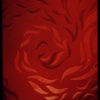 |
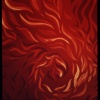 |
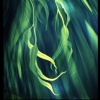 |
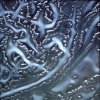 |
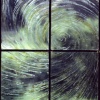 |
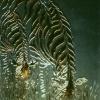 |
Acid-etched Antique Glass
Stained glass is one of those crafts where methods have changed very little over the centuries. The small hand-held cutting tool may be a little more sophisticated than its medieval counterpart, but there is a similar skill to be mastered in designing and cutting glass, leading and soldering. However, until the last century, the skill of producing glowing depths of colour seemed to have been lost. Research into the jewel-like thirteenth century glass at Chartres revealed that the depth of colour in the rich red glass had been obtained by flashing several thin layers of coloured glass across a clear glass surface. Now, centuries later, glass manufacturers, keen to simulate these glowing reds and blues, began to produce a special "antique flashed glass" using similar layers of coloured glass to create deep reds, blues, greens and amber.
...and acid-etched glass? ...well, I was coming to that!
Around fifty years ago the discovery that hydrofluoric acid would eat into glass gave artists a totally new medium, particularly when using antique flashed glass. It is now possible to create patterns within the glass itself by using various acid resists.
"But hydrofluoric acid is highly dangerous stuff!" Said my horrified husband. "It causes terrible deep burns, and eats into your lungs..." This is why I had to use a special fume cupboard, don protective elbow-length gloves, and work on each piece of glass at arm's length behind a screen...not the easiest way to be creative! But the resulting depth of coloured light can be incredibly beautiful.
I usually acid-etch into Antique flashed glass from the St Just studio in France, renowned for its quality and depth of colour. Etching straight through the coloured layer to reveal the clear glass base is a relatively straightforward process, but it is possible to etch in such a way that two or three tones of paler colour are etched, layer by careful layer from the thin coloured surface.
The colours in etched glass are best seen with the sun shining through them. Then the whole quality of the design changes throughout the day and sometimes the glass appears to dance with light.

